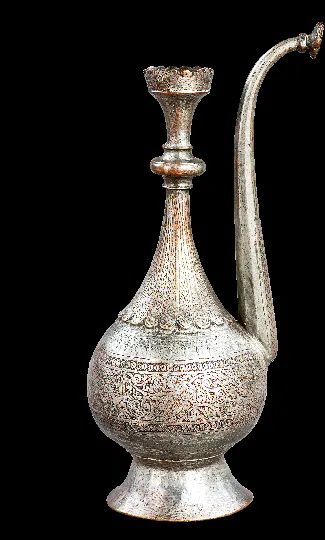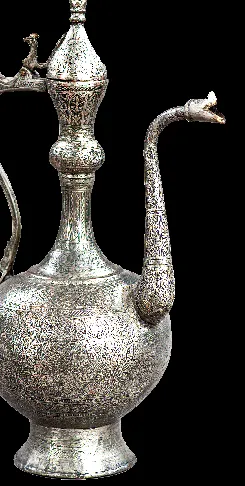
Yes, Uzbek tea drinking has become popular in many regions of Central Asia. Due to this, the popularity of vessels for water and brewing and drinking tea has naturally increased.
Choydish jugs, made of copper or bronze, distinguished by their pear-shaped shape, which enabled water to be heated quickly and with a short spout attached to a low neck, were commonly used in wealthy homes. Tea was drunk from porcelain teapots brought from Russia and China and from ceramic kosacha bowls made in the local ceramics production centres.
One of the groups of vessels forming this collection are jugs called choydish. They have a characteristic form: an elongated, slightly flattened body, an ovoid, short spout, a small lid and an ear-shaped handle. In this group of objects, there is a choydish distinguished from other metal objects by its decorativeness, achieved thanks to sophisticated decorative techniques, such as engraving and openwork. Choydish is an excellent example of the craftsmanship of Bukhara artisans, as evidenced by the decorative nature of the vessel and the sophisticated decorative techniques such as engraving and openwork.
More information about this can be found in the book-album "Cultural Legacy of Uzbekistan in the Museums of Poland" (volume XL) from the series "Cultural Legacy of Uzbekistan in the Collections of the World".
The general sponsor of the project is the oilfield service company Eriell-Group.

